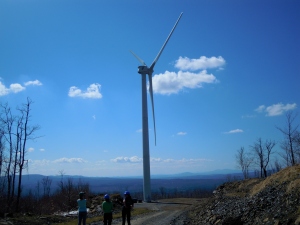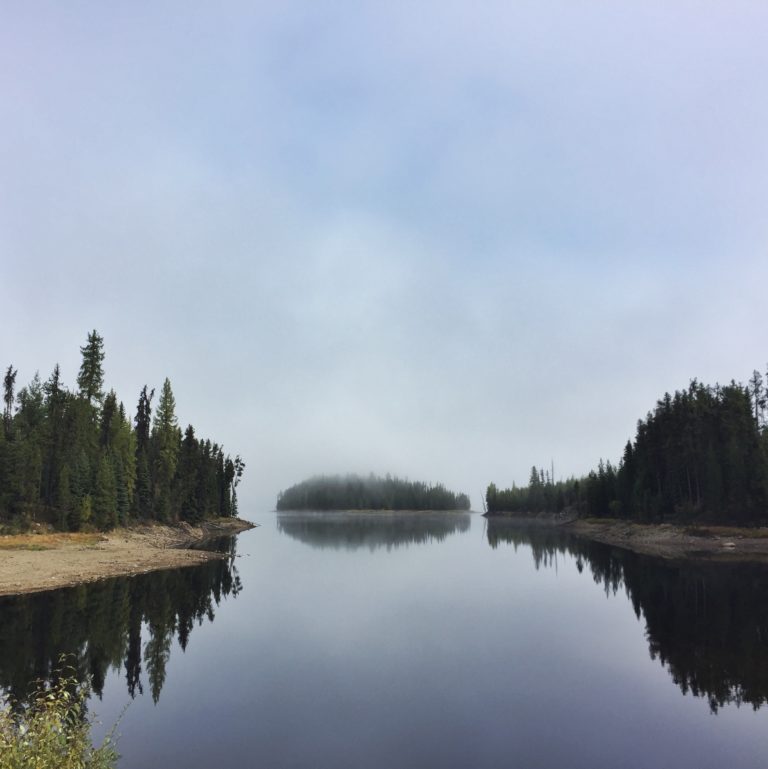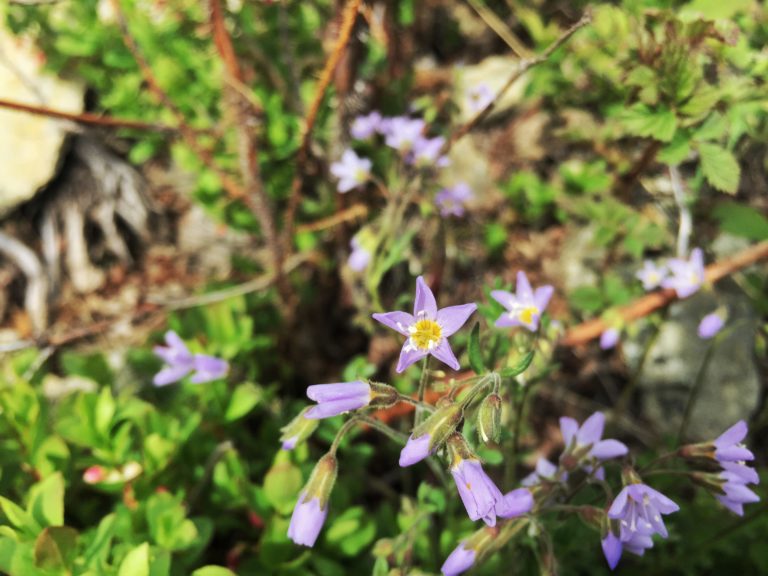Blown Away By Wind
Sorry for the bad pun, but I had to grab your attention somehow. 🙂
Today I’m going to deviate for a moment and discuss something not entirely related to plastic. Today’s topic is wind. Wind farming, to be exact. Why do I want to devote an entire blog post to this? Well, for one, all the things I want to say won’t fit into one Facebook status update or tweet. Plus, I have pictures to share with all of you and so many facts and most of all…total excitement about wind power.
Two days ago, I had the distinct pleasure of visiting a wind farm in Sheffield, Vermont which is located in an area of Vermont known as the Northeast Kingdom. When I say it’s rural, I mean it. The town of Sheffield could be missed in the blink of an eye but what this area lacks in buildings and streets it more than makes up for in breathtaking scenery…this is real and true Vermont. A project like the Sheffield Wind Farm finds a perfect home in this region. Currently, 16 2.5MW Clipper Liberty turbines grace the rolling hills of Sheffield and this project is projected to produce approximately 106,000 megawatt-hours of power for Vermont utility companies. If you’re wondering, that’s enough power to keep all the homes in Caledonia County (the county in which Sheffield and surrounding towns sit) running. That’s a lot of power.

But I don’t want this blog post to be a technical one, full of megawatt this and number crunching that. No, I want to use this post as a means of sharing my newfound knowledge of wind power. I’ve been an advocate for alternative energy for a few years now and recently a big proponent of wind: going so far as to write letters-to-the-editor for a few VT publications on why wind power is necessary in state. Some of those letters received negative responses, and it was really frustrating. I thought I knew all the facts! The people fighting back were throwing all sorts of other facts in my face: wind turbines cause massive bird deaths, the sound from spinning turbines causes health problems and mountains must be blown up for large-scale wind power to find a home. How was I supposed to know what was right?
Well, on Wednesday, it all became clear. What I learned is that opponents of wind power, while some of their claims might be slightly justifiable, are usually totally off-base. The company that owns the Sheffield Wind Farm, First Wind, was very open and honest in discussing the realities of wind power production. What I learned is this:
Wind turbines are not slaying birds and bats left and right. In fact, First Wind is undertaking a study with graduate students to research exactly how many bats die at the hands of wind turbines at the Sheffield site over the course of a 7-month period. And in all of their projects, they adhere to a strict environmental stewardship protocol which is available for anyone to read, on their website. Here, have a look.
Wind power does not require mountain top destruction. In fact, wind power is actually as non-invasive as you can get, when you compare all forms of energy production. The lengths First Wind went to show us how hard they tried to keep things untouched and wild was amazing. It wasn’t just a show, you could tell they really cared about this beautiful wooded mountain and all the habitat it contained. They even rerouted the layout of the turbine placement after discovering critical bear habitat on the site. The coolest thing about this site though is that it sits atop an old logging tract. The mountain was already clear-cut when First Wind got to it! They were perfectly upfront in admitting that yes, there was some blasting involved but nothing like what the opponents of wind are claiming. And the site is beautiful – tons of birch trees growing in around the turbines, the forest absolutely full of life. This project has actually resurrected the wooded hills and preserved the land against further development. It was really something to be driving up a mountain, surrounded by trees and all of a sudden see the white pillars of these beautiful, graceful turbines spinning in the breeze. Which brings me to my next point:
Wind turbines require very little wind to start operating. On the day that I went, it was about 80 degrees, sunny with not a cloud in the sky…and no wind. We were all sort of bummed out, until a slight breeze picked up and wouldn’t you know it: the turbines started rotating. Even I had my doubts about this one; what happens if there’s no wind? These turbines are behemoths, 400+ feet tall with blades reaching a 141 feet wingspan. You must need a ton of wind to get these things going, right? No, wrong. A breeze is all it takes. 4 meters per second, to be totally exact. First Wind has gone to great lengths to make this project as efficient as possible and so far, it has surpassed even their wildest expectations.
Did I mention that First Wind was able to get this site operational in 7 months? Fighting blizzard after blizzard last winter, extensive rain, flooding and Hurricane Irene? Sixteen 400ft wind turbines put up and running in less than a year. I’ll give you a second to let that settle in.
Oh and that noise that you hear people griping about? The one that causes all those health problems? Well, the reality is that even surrounded by wind turbines on all sides, we could barely hear anything, other than the hum of machinery in the hub of the turbine working. When wind turbines pick up speed, the only sound to be heard is the whooshing of the blades and that’s if you’re standing directly underneath them. Walk a few hundred yards away and the sounds of the forest overpower everything else. Point being? They’re virtually silent.

So there you have it. Some truths about wind power. These are the things I found most valuable about the trip. What’s more, I now have the knowledge and can spread it, through this blog, with the photos and videos I was able to capture and most of all, with my passion. Wind power is clean, simple and totally efficient if done properly. After standing in the presence of so much greatness, staring the future right in the face, it’s hard to get back in a car and justify spending so much money and energy on dirty, noxious finite fossil fuel.
Which is why everybody should go and tour a wind farm, as soon as possible. Or read this blog. Or watch videos of turbines running. Because the more people who can see them for themselves, the better!
Many thanks are owed to the Vermont Public Interest Research Group for inviting me to tour the wind farm with them as part of their advocacy group and also to the First Wind folks for taking time out of their day to show us around and give us all the facts, straight up. 🙂
If you’re wondering where those photos and videos I was talking about are, they live in this Picasa Web album. Please feel free to enjoy and share these, but please cite myself and VPIRG when doing so. Muchas gracias!
 |
| Sheffield Wind Farm Tour |



